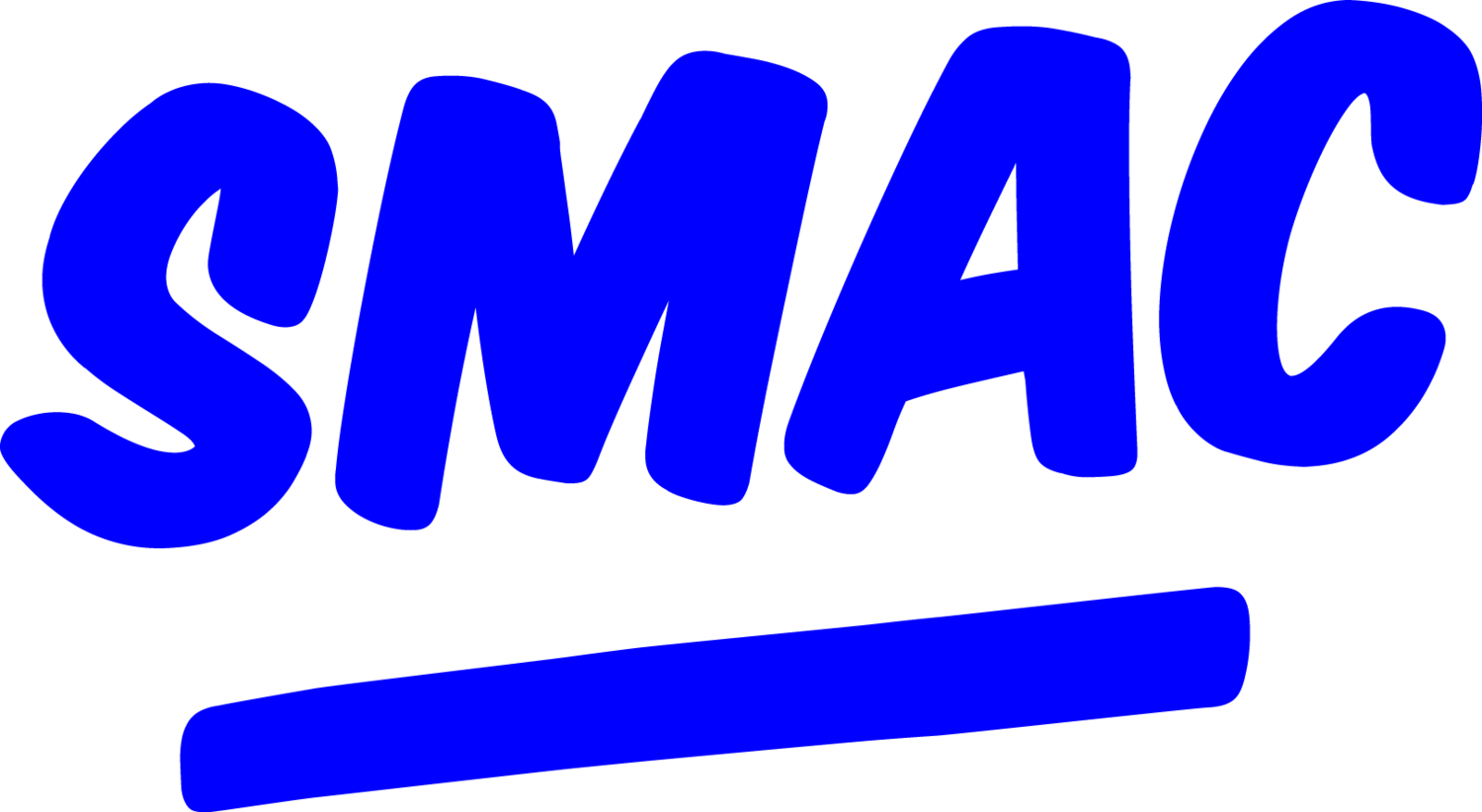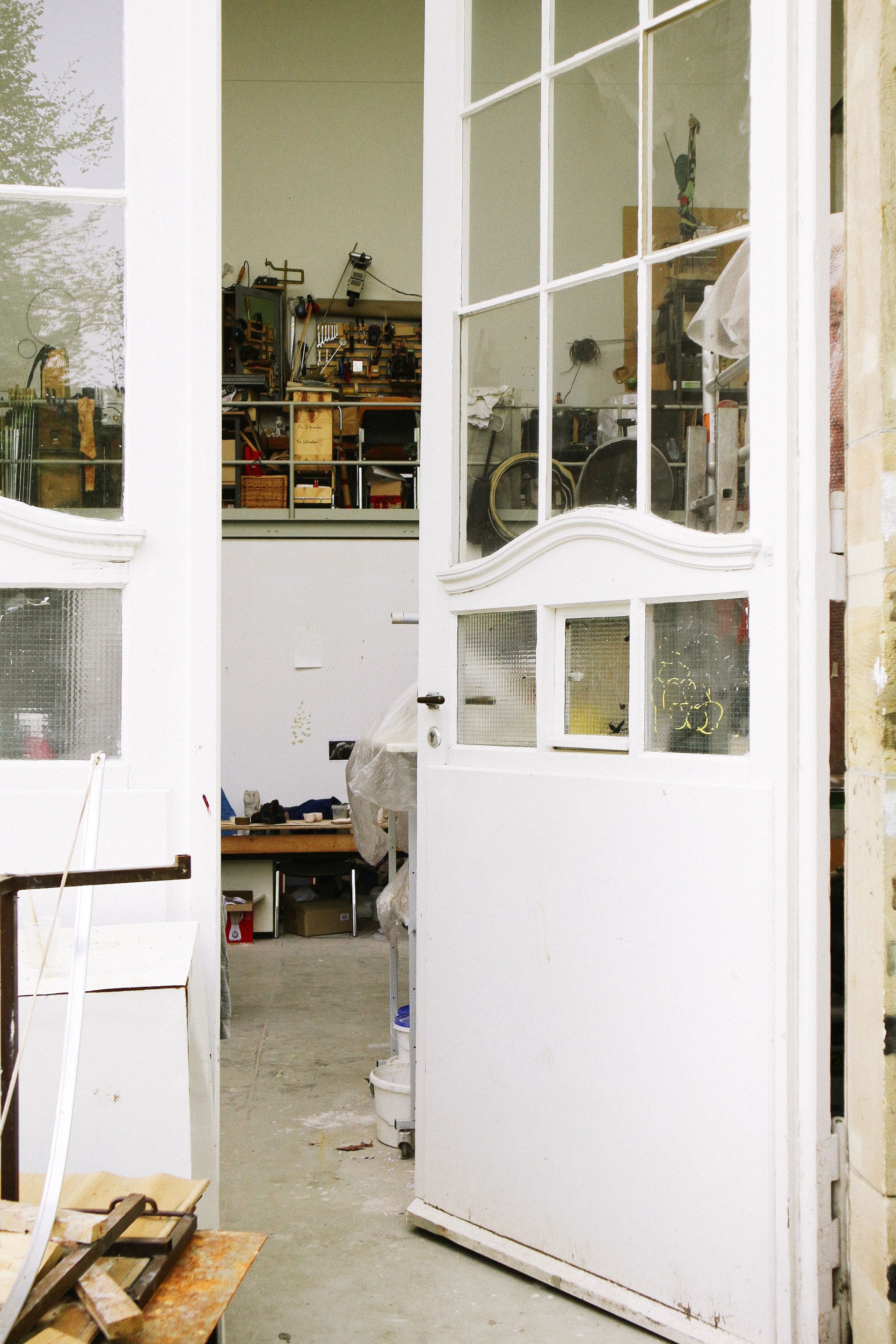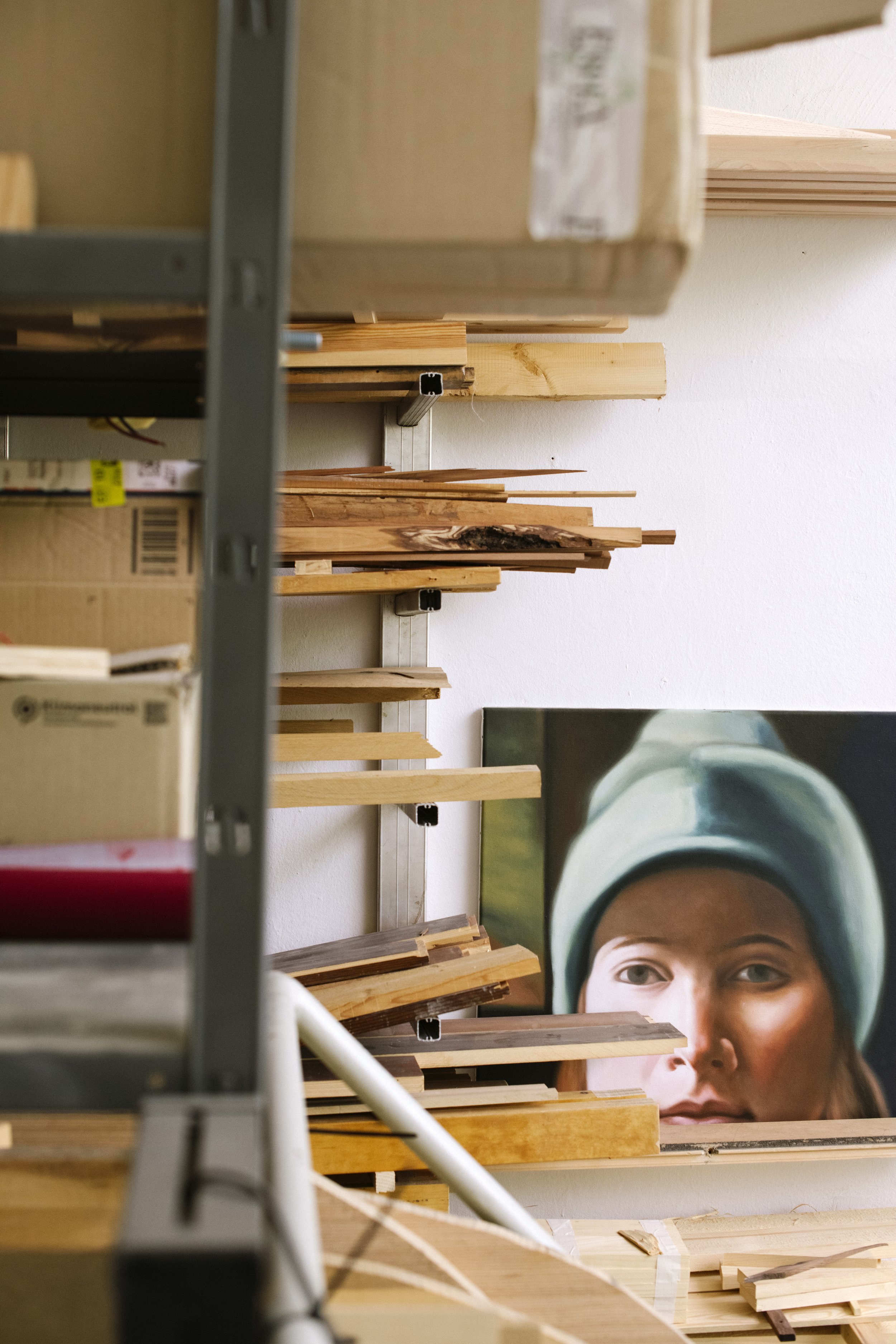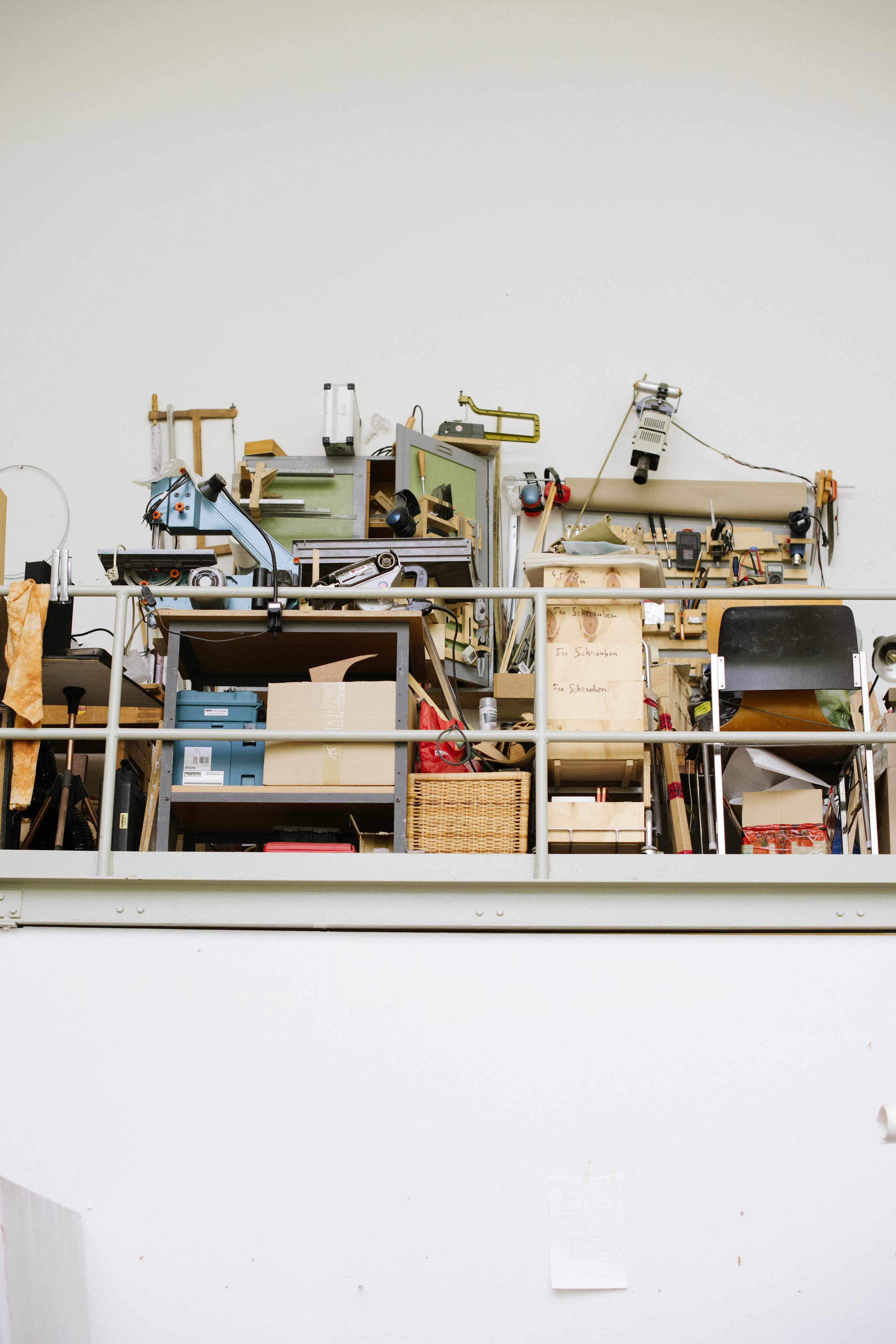Interview with Xuejing Wang + Raphaël Fischer-Dieskau
Wake Up Before Dawn // 26th April – 19th May 2024
SMAC: You are both studying sculpture with Karsten Konrad at the UdK Berlin. Is that how you two met?
Raphaël Fischer-Dieskau: Yes, we are very lucky to have such a great class, in which many friendships and communities could and can be formed, and where co-operations have often been established.
Xuejing Wang: The collaboration and open exchange about our work create a productive basis and mutual inspiration.
In the exhibition Wake Up Before Dawn, which we can now see at SMAC, your works not only form a dialogue. The work Lost/Found was even created collaboratively. How can we imagine the process?
RFD: It is difficult to describe the process, as it was often decided in many small, inconspicuous moments. We rarely planned big, conscious steps. There were many conversations, first attempts, small models, which then became more and more solidified. Step by step, it became clear what the work itself needed and required.
Is this your first collaboration?
XW: Indeed. The idea of working on a project together had been buzzing around in our heads for a while, and eventually the opportunity arose quite naturally.
How did the selection of works come about as they are now presented?
XW: From the very beginning, we were in discussion about what we could show, what we wanted to show, what already existed and what we would have produced for the exhibition. These many nodes then quietly developed into a larger knot until we were able to walk through the rooms intuitively and knew without much hesitation exactly which works would fit best in which places.
You work in very different ways but with similar themes. Was it easy to visualise your works together in an exhibition?
RFD: This is not our first joint exhibition. We have also exhibited together several times at the Russi Klenner Gallery. So we knew from the beginning that our works could harmonise very well with each other.
What impresses you most about each other's work and working methods?
XW: I think there is a revolutionary force in Raphaël's work. His ideas are always refreshing, and his expertise in certain materials, which I know nothing about, fascinates and impresses me. I remember the first time I saw a scaffold that he had 3D printed. I was curious and asked him why he was doing it, and he told me that it was the most stable structure that a computer programme had ever created. Suddenly it seemed like a new form of nature to me. I really appreciate the technical quality of his work.
RFD: What impresses me most is the patience and dedication with which Xuejing approaches her work. This reveals both a seriousness and a delicacy that are particularly present in her work. It is also the gift of discovering something special in an everyday material that has been seen so often and then making it visible to everyone else in a surprising way.
Xuejing, when I saw your work, I was reminded of Christiane Löhr. Which other artists have influenced your work? Are there traditions in which you place yourself?
XW: I really appreciate the work of Christiane Löhr. Her works are poetic and consist of natural materials that make you think. The most important artists who have influenced me are Doris Salcedo and Constantin Brâncuşi. There is a kind of spiritual timelessness in all their works. In my work, I tend to incorporate influences from Eastern religions, philosophies and aesthetics. Buddhism and my experiences in China have been particularly influential.
Your objects radiate a great tenderness in their construction. It's as if you see the material as a subject in its own right. Is that true?
XW: Thank you very much. Yes, that is true. During my studies in China, I spent three years intensively in the material workshop, which made me develop a strong focus on the importance of materials in my work. I believe that in order to better convey my original intention in a work, a balance between material and concept must be achieved. For me, the best effect unfolds when the material reflects the concept and vice versa.
Your works appear very fragile and are therefore almost in contrast to what is traditionally associated with the term sculpture, namely large stones, solid steel and massive bronzes. How much do you see yourself as a sculptor?
XW: I work with materials that look delicate but are actually durable. I hope to express the antifragility of my work through the fragility of the materials. For me, the materials of sculpture are comprehensive, because it is not only the material that matters, but also the way you look at it and think about it as a sculptor. The material serves as a medium to convey the perception of lightness and heaviness, for example. This perception depends on the overall combination of materials and concepts. Steel can convey a feeling of lightness, while a feather can be heavy. I often don't consciously choose specific materials, but use whatever I come across in life. I see myself as someone who lives in the moment and is inspired by it.
“I hope to express the antifragility of my work through the fragility of the materials. For me, the materials of sculpture are comprehensive, because it is not only the material that matters, but also the way you look at it and think about it as a sculptor.”
Raphaël, your work often combines nature and technology. Do you feel equally drawn to both areas?
RFD: Technology is supposed to improve nature or solve its problems. This desire and this hope are a hubris that not only condemns us humans to functionaries of the apparatus - as Villem Flusser describes it - but also destroys something deeply human in us. We are giving technology an ever-increasing presence and an ever-increasing influence on our lives, and at the same time we are longing for something that has not existed for a long time: unspoilt nature and our connection to it. Our current approach to both makes them incompatible. What we risk losing is not only an ecosystem that can sustain us, but also a profoundly human experience. The feeling of something that is bigger than ourselves and that can and must remain unexplained.
“Technology is supposed to improve nature or solve its problems. This desire and this hope are a hubris that not only condemns us humans to functionaries of the apparatus - as Villem Flusser describes it - but also destroys something deeply human in us.”
The title of the exhibition is Wake Up Before Dawn. Is this to be read as a metaphor?
RFD: The title was a proposal from Xuejing. We wanted to present something that would create a connection between our two works. This mood, which is a very special one: just before the sun rises, when the whole world is still heavy with night and quiet and the dawning day is already looming, but its full explosion has not yet taken place. It is a moment that lasts only briefly and is so pregnant with meaning and devotion, lonely and fragile. That was the goal we both worked towards for this exhibition.
To what extent do you see your works as political, social or aesthetic commentaries?
RFD: A sense of radical resistance is very important to me. Disobedience is something great, something indispensable that is worth standing up for. That sounds like rioting and arson, but I think you always have to understand it in context. In our society, I would argue that facing up to what it means to stay in one place - both physically and metaphorically - is a radical act of resistance. Then you begin to recognise in small ways a thousand wonders that have always been right under your nose.
You are a trained cellist. How big is the influence of music in your work?
RFD: Very big! Music works on a visceral level, using rhythms, movement and dramaturgy. I also try to apply these qualities and syntax in my work, which is sometimes very difficult. Music training also and above all means developing an understanding of rigour, discipline and technique. The first and most important thing as a musician is to practise scales. If you don't master the technique, you can't play freely. The same applies to art. Without technique and craftsmanship, free creation is not possible and without rigour and discipline, i.e. daily intensive practice, a certain depth remains unattainable. I remember my cello teacher Marcel Bardon, who used to tell us students that his professor tested him on his finger muscles by placing a sugar cube on the table, which he was supposed to smash with the little finger of his left hand. If the muscles in the hand were not strong enough for this, the ability to play difficult pieces well was also impaired.
How big is the influence of your current art professor on your work?
XW: We are incredibly lucky to have Karsten Konrad as our professor. The impact will be seen in many different ways, not least in the atmosphere he has created for his class, where anything is possible and can be achieved together, in his good advice and also in the pointed comments when appropriate. In an understanding of sculpture and art that is lifted from its pedestal to become something tangible. Also in the support he offers his students to give them the best future, and in the freedom he gives everyone - including us - to develop where they need and want to, rather than being pushed into a corner.
RFD: At this point, it would be inappropriate not to mention Sinta Werner. Our guest lecturer, who is always present in class, pushing us to do more and better, is a great blessing for us. Her perceptive and supportive nature down to the smallest detail is particularly valuable.
You are both graduating from the UdK Berlin this year. What awaits you after art school? What do you expect from life?
XW: Virginia Woolf once wrote in her diary that the future is dark, and that is the best it can be. We don't know what to expect, but we hope that it will surprise us. There is one thing we can already look forward to: a shared studio with three great fellow students.
Interview: Hilka Dirks
Photos: Natascha Hamel










